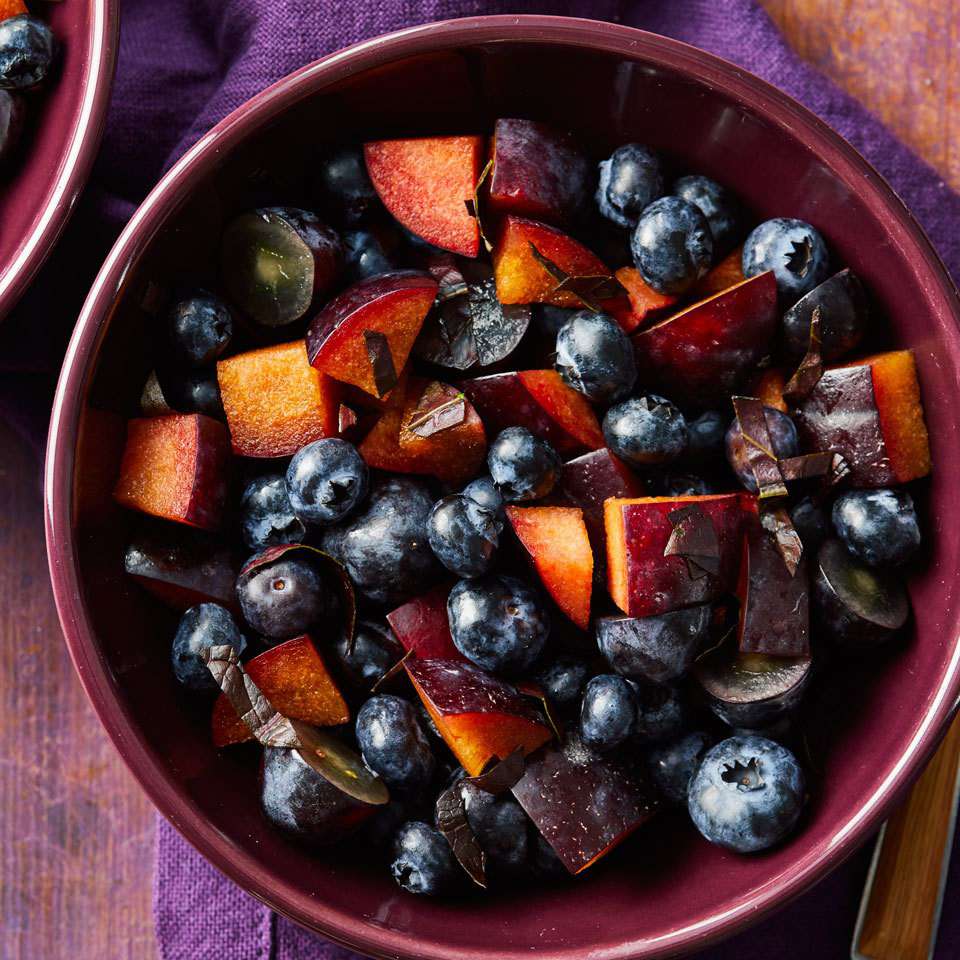Sometimes, we eat a little too much. And while that extra slice of cheesecake (or two) may have sounded like a good idea at the time (and was absolutely delicious), eating too many calories can force your body into overdrive as it tries to digest a high volume of food. “Just metabolizing food—especially fat- and carbohydrate-rich fare—causes the body to produce free radicals, which attack cells and can promote the development of chronic conditions including heart disease, diabetes and cancer,” says Ronald L. Prior, Ph.D., research chemist and nutritionist with the USDA at Arkansas Children’s Nutrition Center. And, of course, the more we eat, the more free radicals we produce.
Here’s the good news: antioxidant-rich foods are a delicious way to counteract the oxidative stress caused by free radicals. You can also reduce the effects of free radicals by eating fewer calories. Try one of our meal plans to help you find a balance. Below, we’ve rounded up some of our favorite ways to incorporate antioxidants into your diet.
Pictured recipe: Pistachio & Peach Toast
1. Eat Fruit
If you’ve eaten a big meal, follow up by eating fruit. Eating antioxidant-rich fruits—including berries, grapes, kiwi and cherries—helps minimize the harmful free-radical damage that occurs after a meal. Make a fruit plate for dessert or if it’s the day after, aim to eat fruit throughout the day. Try a fruit smoothie or whole-grain toast topped with fruit at breakfast, fruit mixed into a salad or served on the side at lunch and chia pudding or yogurt with fruit for a snack.
Pictured recipe: Apple Cider Vinegar Tonic
2. Go for Vinegar
Having a tablespoon of vinegar with your meal, perhaps drizzled on a salad, may temper the spike in blood sugar that occurs after eating a big, carbohydrate-rich meal. Carol S. Johnston, Ph.D., RD, associate dean and professor at Arizona State University’s College of Health Solutions, notes that consuming 1-2 tablespoons of vinegar before a meal may slow the rise of “the postmeal surge in blood glucose by as much as 40 %.” For most of us, a steep rise in blood sugar triggers an equally rapid drop—which stokes appetite. This blood sugar surge is particularly a problem for people with diabetes, who can’t clear glucose effectively (over time, excess glucose in the blood can damage tissues).
Read more: Diabetes Myths that Don’t Lower Blood Sugar
3. Drink Wine
It may seem counterintuitive to pour yourself a glass, but the antioxidants in red wine actually help. A glass of red wine may reduce the negative impact of high-fat foods by lowering levels of a compound—produced in the body after eating fat—that’s linked with heart disease. Cook with red wine or enjoy a glass with dinner. But remember, moderation is key! And don’t force yourself to have a drink in the name of health; there are other foods that deliver antioxidants like fruits and vegetables.
Pictured recipe: Paprika Chicken Thighs with Brussels Sprouts
4. Add Spices to Your Meals
Adding spices to your meal may help to lessen the negative effects of overeating. In a 2020 study published in The Journal of Nutrition, participants who ate a meal that included a 6-gram spice blend (consisting of basil, bay leaf, black pepper, cinnamon, coriander, cumin, ginger, oregano, parsley, red pepper, rosemary, thyme and turmeric) had a lower inflammatory response after eating a high-saturated-fat, high-carbohydrate meal compared to when they ate a nearly identical meal that lacked spices.
Read more: 9 of the World’s Healthiest Spices & Herbs You Should Be Eating
Pictured recipe: Purple Fruit Salad
The Bottom Line
One particularly big meal or one day of overeating won’t make or break your diet and health. The important thing is to not dwell in the past and give yourself grace rather than beating yourself up about any food decisions. Aim to eat fresh fruits and vegetables, drink plenty of water and move your body a little bit—think a walk or yoga class. Plus, these free radical-fighting strategies will help you get back to feeling your best.

